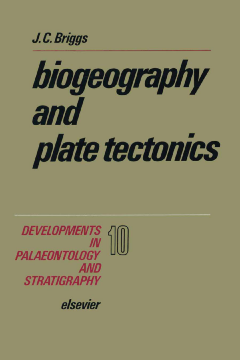
Additional Information
Book Details
Abstract
One needs to look at only a small portion of the enormous literature on plate tectonics published in the last 15 years to realize that there are many differences between the various reconstructions that have been presented. It becomes obvious that, although there is a general agreement about the presence of an assembly of continents (a Pangaea) in the early Mesozoic, there is considerable disagreement among earth scientists as to the configurement of the assembly and the manner and timing of the subsequent dispersal. While the revolution in geophysics was taking place, systematic work in paleontology and neontology was being carried out. This book is an attempt to incorporate the biological evidence into the theory of plate tectonics.
The author traces the changing relationships among the various biogeographic regions and demonstrates how such changes may often be correlated with the gradual geographic alteration of the earth's surface. He analyses recent information about the distribution of widespread groups of terrestrial and freshwater vertebrates, invertebrates and plants, and discusses the biogeographical effects of the movement of oceanic plates.
It is particularly important to obtain dependable information about certain critical times in the history of continental relationships. We need to know when the terrestrial parts of the earth were broken apart and when they were joined together. The present investigation makes it clear that we cannot depend entirely on evidence from plate tectonics nor will purely biological evidence suffice. This book thus provides much of interest to systematists working on contemporary groups of plants and animals, paleontologists, evolutionary biologists, and professors teaching courses in biogeography.
... a useful reference book for undergraduates and research students.
Journal of Biogeography
...the book is a notable contribution. He has researched his literature well. The contribution of the book is in providing a summary of the subject based on the considerable literature and in the comprehensive bibliography. It will thus be a basic reference work.
Copeia, 1989
D.J. Batten
Briggs aims to bring together in his book evidence on the occurrence of a large number of organisms in order to relate these in a comprehensive manner to past distributions of land masses.... the book is successful as a useful summary of current knowledge about past and present biogeographic patterns.... The amount of literature cited, although not as extensive as might have been expected, is nevertheless sufficiently comprehensive to enable the interested reader to dig further into whichever subject appeals... a useful contribution to the biogeographical literature.
Cretaceous Research
This is the first lengthy treatment of global historical biogeography to be based firmly on plate tectonics..... the book should be a standard source as well as one to take potshots at, as standard books usually are.
Evolutionary Theory
